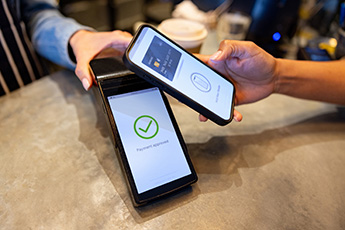The average American home contains 300K individual articles, and the average home size has tripled over the past 50 years. Yet the US still has more than 50K storage facilities, and decluttering services and advice are popular. We love our stuff, but we also love ways to get a handle on it. Just as individuals crave order amid domestic chaos, business owners seek clarity in their financial operations. Accounts payable, accounts receivable, loan interest rates and balances, inventory, tariffs, marketing, technological developments, payroll, commodity price shifts, cash management and forecasting, taxes, budget management, apps, and multiple banking relationships. Even before selling a single good or service, the owner of a small or medium-sized business (SMB) has a lot to track. The problem only gets more complicated when a business owner has to track all these things on separate devices, apps, and websites, with sources for each of their commercial and financial relationships. American businesses are less and less likely to run all their finances through a single bank. Yet, they do want a single place to look at every part of their business’ finances. A financial institution that can provide this financial overview via one dashboard may not become a customer’s only financial relationship but will very likely sit at the center of that client’s financial management. It’s an invaluable tool that simplifies management, facilitates informed decision-making, helps cut costs, and promotes business growth.A dashboard is a more effective, connected, digital version of a spreadsheet, which research shows about a quarter of people use to track their finances. It’s password protected, which a spreadsheet probably isn’t, and available via any device and at any time. What Makes a Good DashboardA good dashboard should connect the user with every financial account, whether it’s with the financial institution that’s providing the dashboard or not. It should let the user access and use those accounts through links. Beyond that, a quality dashboard offers:
- Data consolidation. Users need to see their full financial situations in one place, on dashboards that consolidate data from multiple sources and present it in a clear, organized way.
- Data visualization. Business customers should be able to see graphic representations of their financial information. If a firm has used 20% of its available line of credit, for instance, a pie chart can show the visual proportion of credit used. A dashboard should also let users easily create customized reports and graphics, presenting whatever data customers want to see.
- A user-friendly interface. Clutter-free layouts and intuitive controls are good practices for most websites. Those design principles are particularly important here. SMB owners need to focus on understanding and deriving insight from their financial information, not on wrestling with an unwieldy interface.
A modular approach could let a financial institution offer dashboards of the right complexity to each of its business customers. Businesses that need it get a more complex dashboard while a simpler dashboard suits those that don’t need a more complicated approach. Oracle’s dashboard product, for example, is divided into:
- Trade finance management, which provides a way to attach a letter of credit to multiple documents at once and a draft SWIFT message view, as well as accounts payable and receivable, links to self-service applications, and a complete view of exports and imports.
- Cash and liquidity management, including real-time information across product lines, credit availability and use, global liquidity position, and current cash flow compared with past and projected future cash flows.
- Working capital finance and reconciliation, where clients find accounts receivable and payable, current and overdue invoices, and links to see invoices and onboard counterparties.
In theory, an institution could create other parts of a dashboard for any business that needs them and add the new material to an internal menu of options for future commercial customers. That’s an additional way to impress business customers and place your institution at the center of SMBs’ financial lives.Financial dashboards won’t lock in exclusive relationships, but they can anchor a community financial institution’s relevance in a competitive landscape. The institution that helps business owners see clearly — across all financial fronts — becomes the one they return to first.




